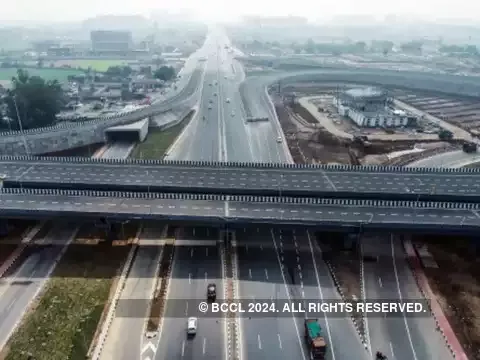The Delhi-Mumbai Expressway project, inaugurated by Union Minister Nitin Gadkari, marks a significant milestone in India’s infrastructure development. Set to be fully operational by the end of this year, the expressway is poised to revolutionize travel between the country’s capital, New Delhi, and its financial hub, Mumbai.

Stretching over a distance of 1,350 kilometers (838 miles), the Delhi-Mumbai Expressway is set to become the longest expressway in India upon completion. It forms a crucial part of the Golden Quadrilateral project and is strategically designed to reduce travel time and congestion on the route.
The route of the expressway traverses through several states and a Union territory, including Dausa, Kota, Ratlam, Vadodara, Surat, Delhi, Gujarat, Maharashtra, Madhya Pradesh, Rajasthan, and Haryana. Notably, it will connect the Jawaharlal Nehru Port in Maharashtra with the Sohna Elevated Corridor in Delhi, facilitating smoother movement of goods and people between these vital economic regions.
One of the most significant advantages of the Delhi-Mumbai Expressway is its potential to drastically reduce travel time between New Delhi and Mumbai. Current estimates suggest that travel time could be halved, from the existing 24 hours to approximately 12-13 hours, making it a game-changer for commuters and logistics operators alike.
However, access to the expressway comes with toll charges, with rates varying based on the specific routes and toll plazas utilized by commuters. Starting at Rs 95 for light vehicles, these toll charges contribute to the maintenance and operation of the expressway.
Overall, the Delhi-Mumbai Expressway represents a monumental leap forward in India’s transportation infrastructure. By enhancing connectivity and reducing travel time, it promises to stimulate economic growth, facilitate trade, and improve overall quality of life for residents along its route. As it nears completion, its impact on India’s development trajectory is anticipated to be profound, positioning it as a vital artery in the nation’s transportation network.
